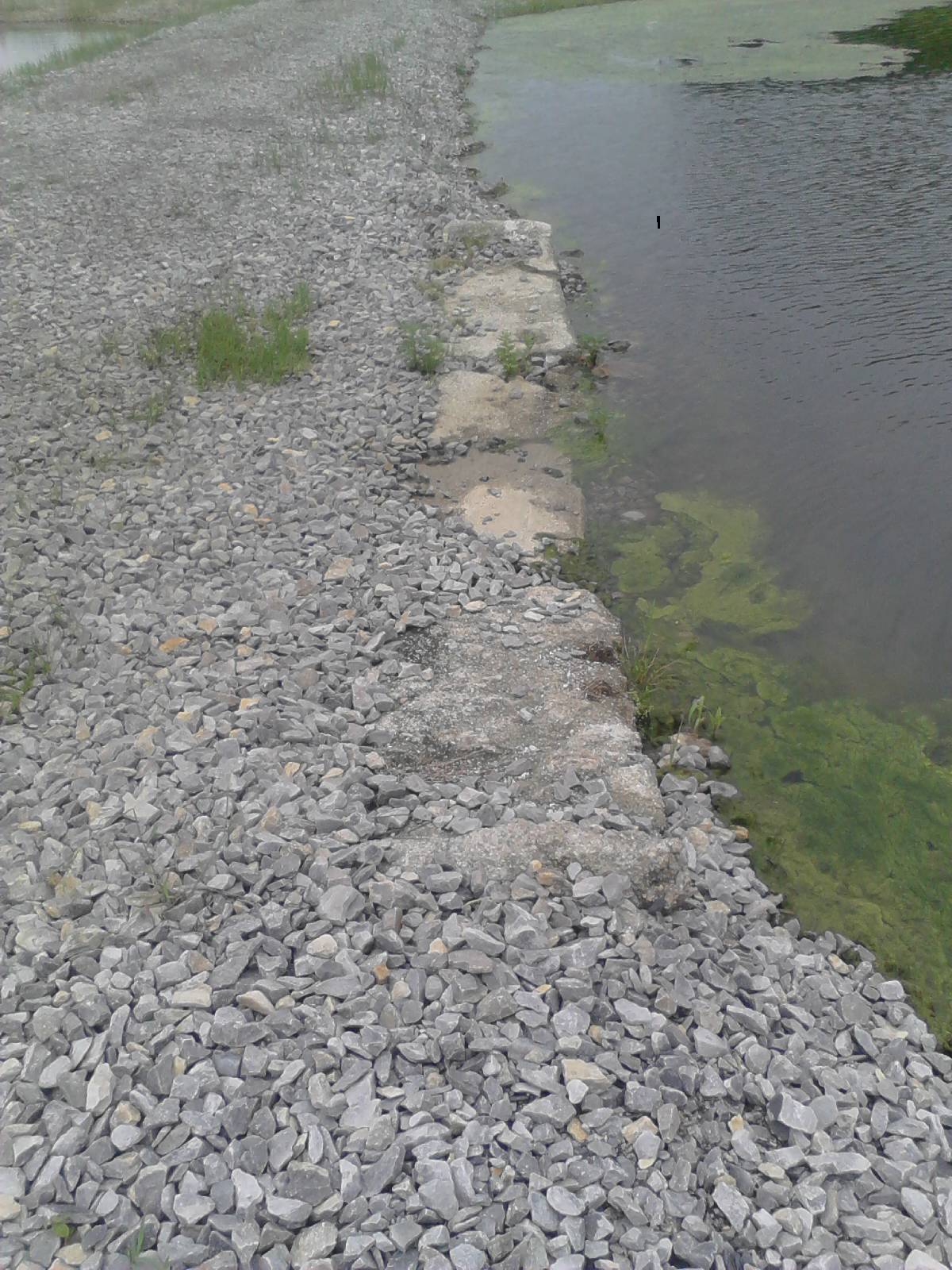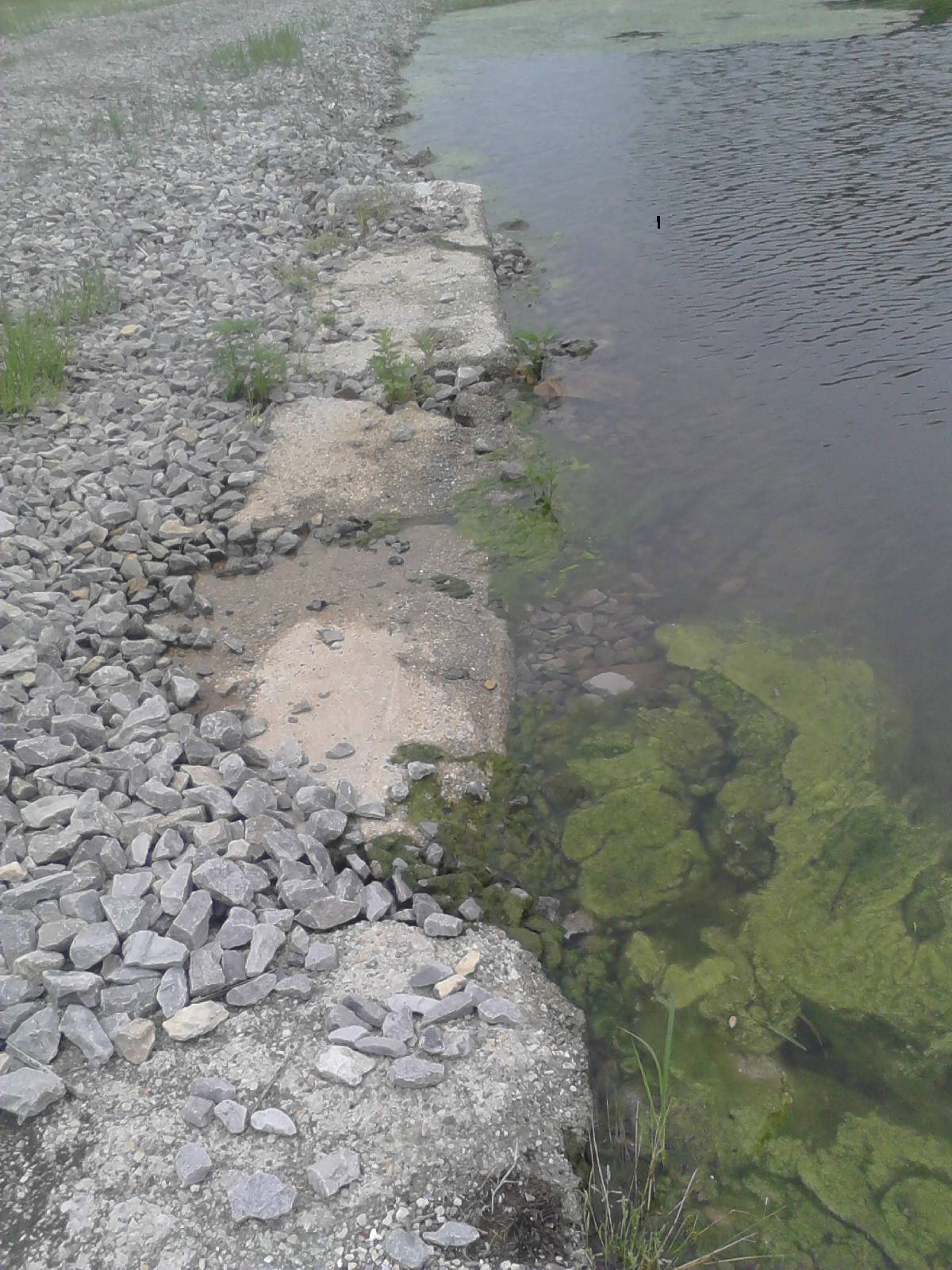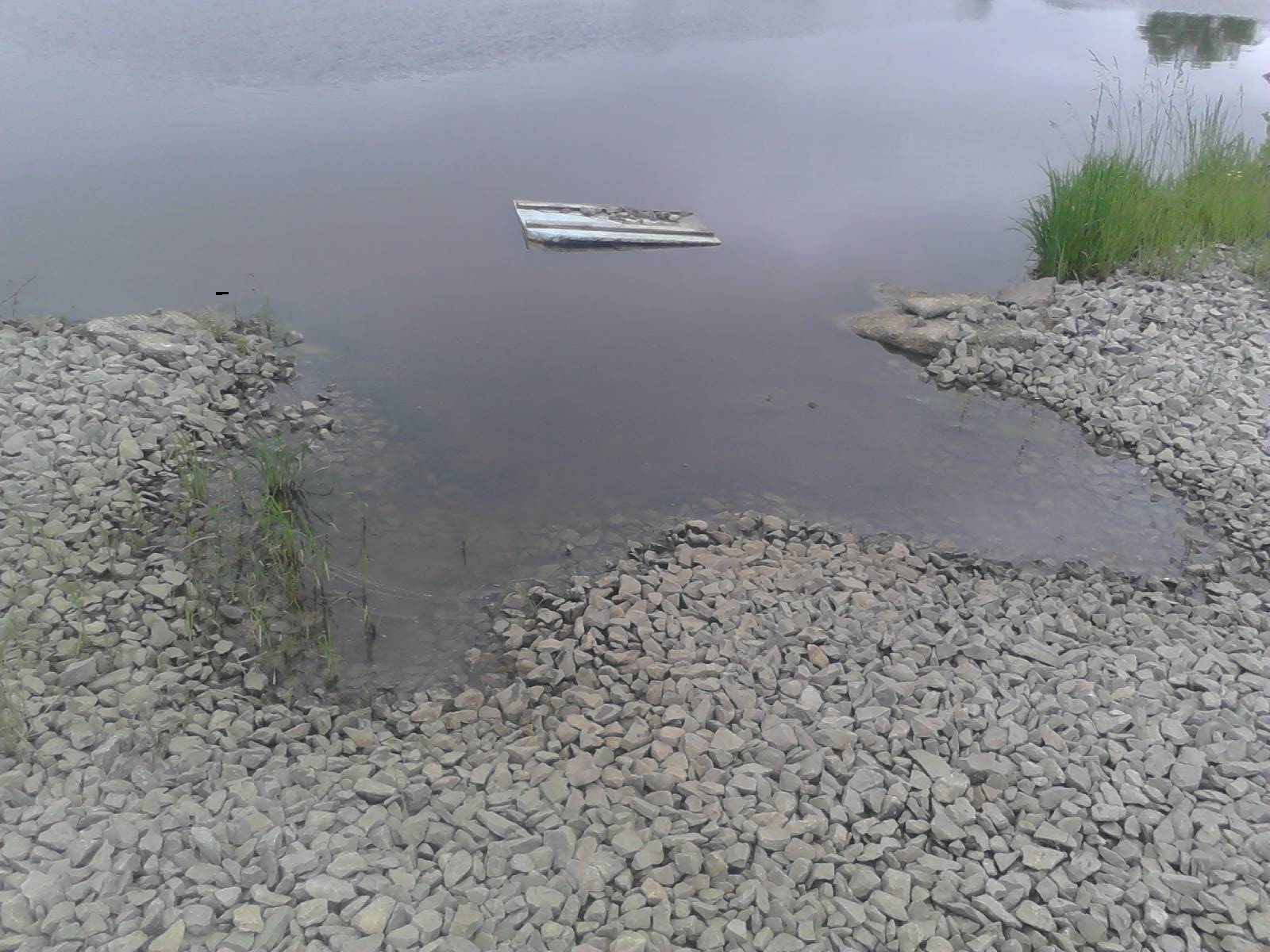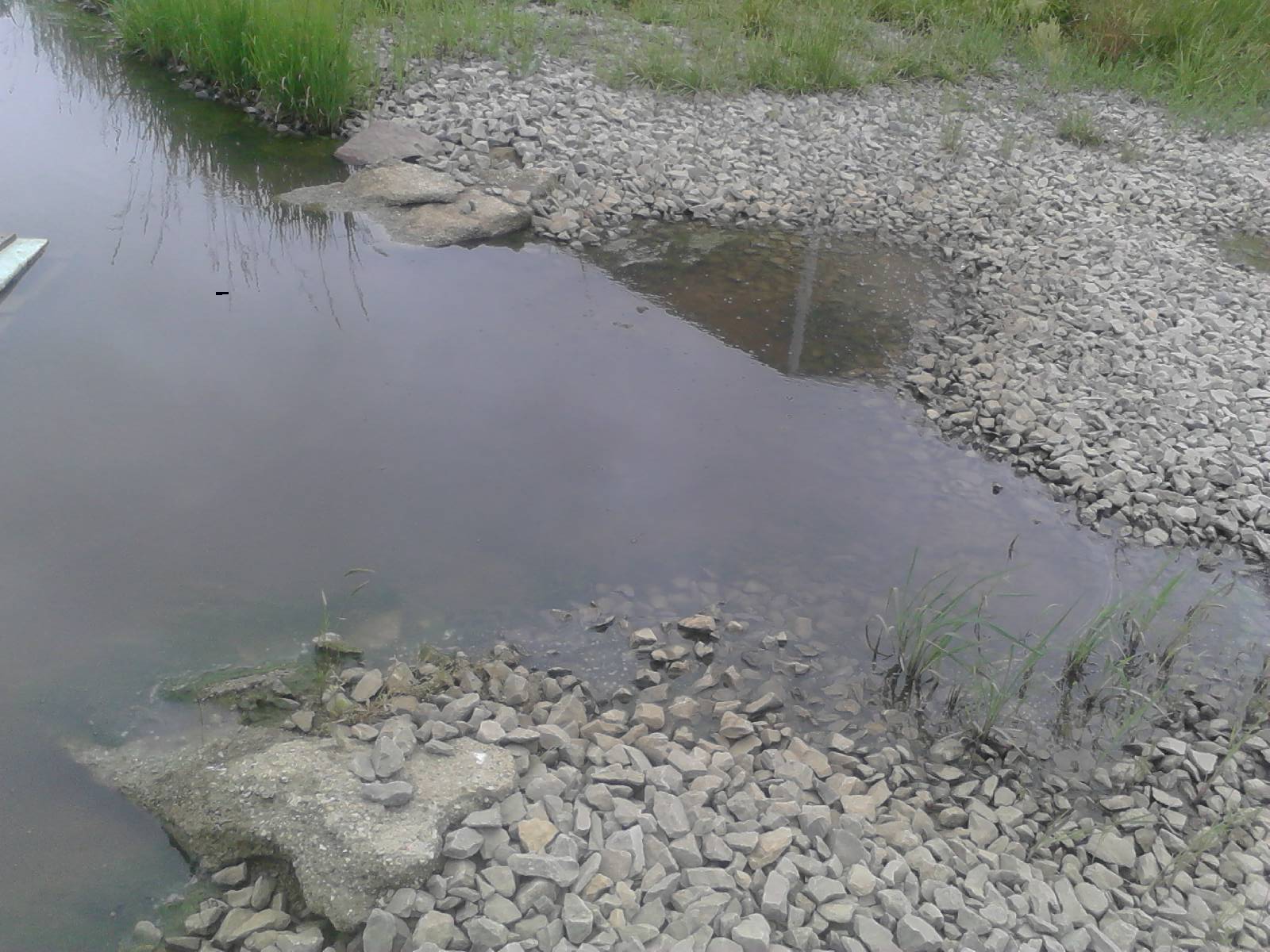Nice video example of the power of water going out an overflow Tbar.
Below are pictures of what I did with some old concrete slabs to counter a problem of my small 2-4" rock being washed off into the ponds as the water increased in velocity as it fell from one elevation down to a lower elevation. I had no problem with the rocks moving on the front side or the middle, just as the water broke over into the next pond. In the pictures at current water levels it would not be an issue. But during last years drought and the pond levels were significantly lower, as the water cascaded down into the next pond, the rocks would wash away.
The concrete slabs were chunks of old concrete sidewalk that went around part of our old 1900's barn. The concrete is older than I am, made of Portland cement and chat (chirt) from local lead/zink mines. Not the best aggregate in the world and no sand so rather poor concrete, but it served its purpose for probably 60 or more years and will serve its second purpose in life in the pond as long as I need it to.
I used the back hoe to make a flat surface to sit on the clay, then hand fitted with a shovel so the old slabs would fit in correctly on the bank. Then filled in any cracks with rocks as big as would fit. It has worked well since last summer when installed.
In the last two two pictures the concrete is mostly covered with water because water is at overflow levels. But you can see the concrete at both sides. This is where water from my tiny pre-sediment pond enters the 1/10th acre sediment pond. The first two pictures are where water enters my main 3 acre pond from the sediment pond. The slabs keep the rock from washing down into the pond. Notice how the ends of the channel are tipped up to make sure the water flow is contained within the channel. If not the water could erode the edges and wash the rocks away at the ends. If the main pond water level is low when this emergency overflow (there is a 6" pipe to handle normal flow rates) the water drops off these concrete slabs into water rather than eroding the bank.
Edit: The last two pictures all you can see of the concrete slabs is the ones on either side of the spillway. But between those slabs and underneath the water are more slabs that would come into play when the water level is much lower in the pond.



